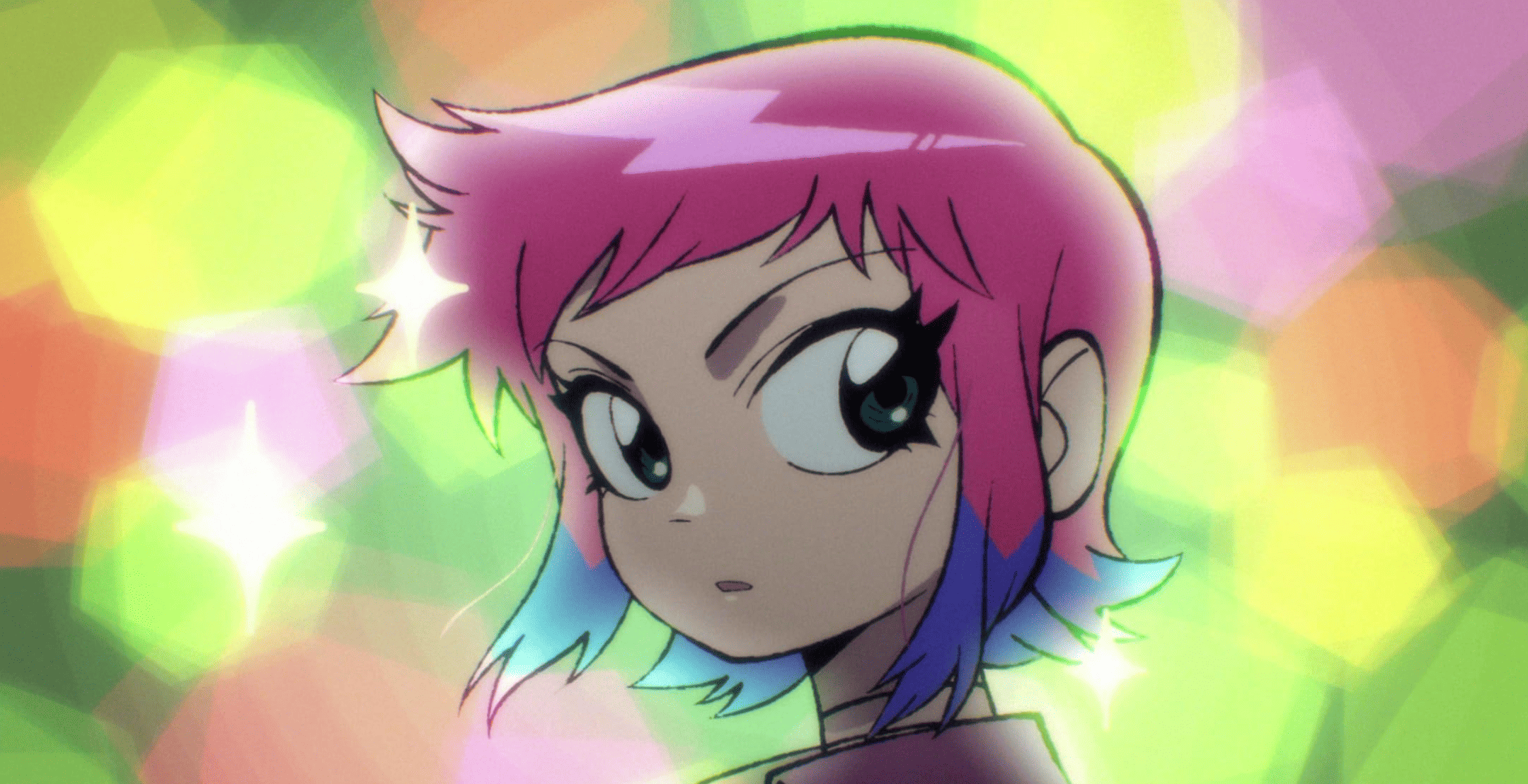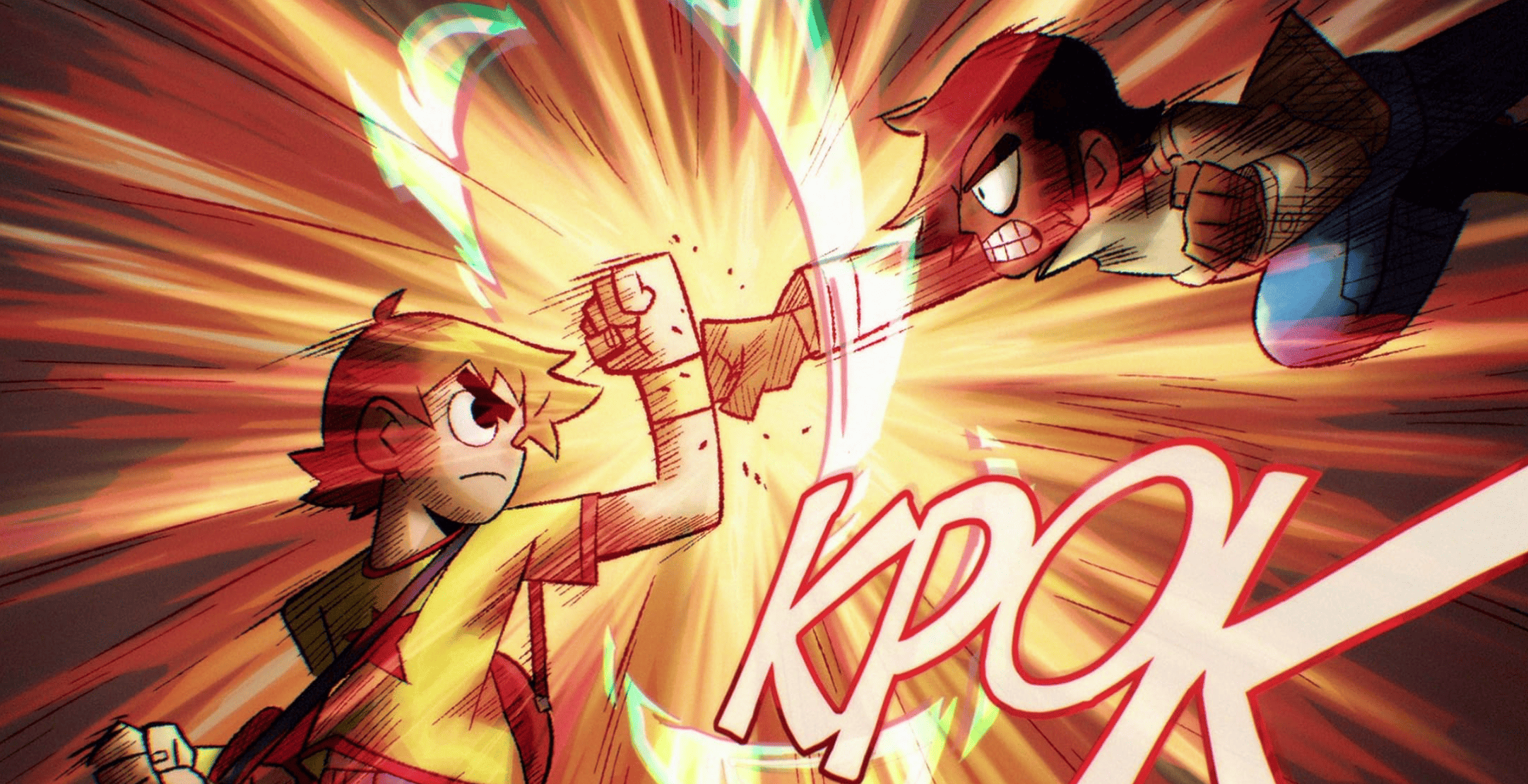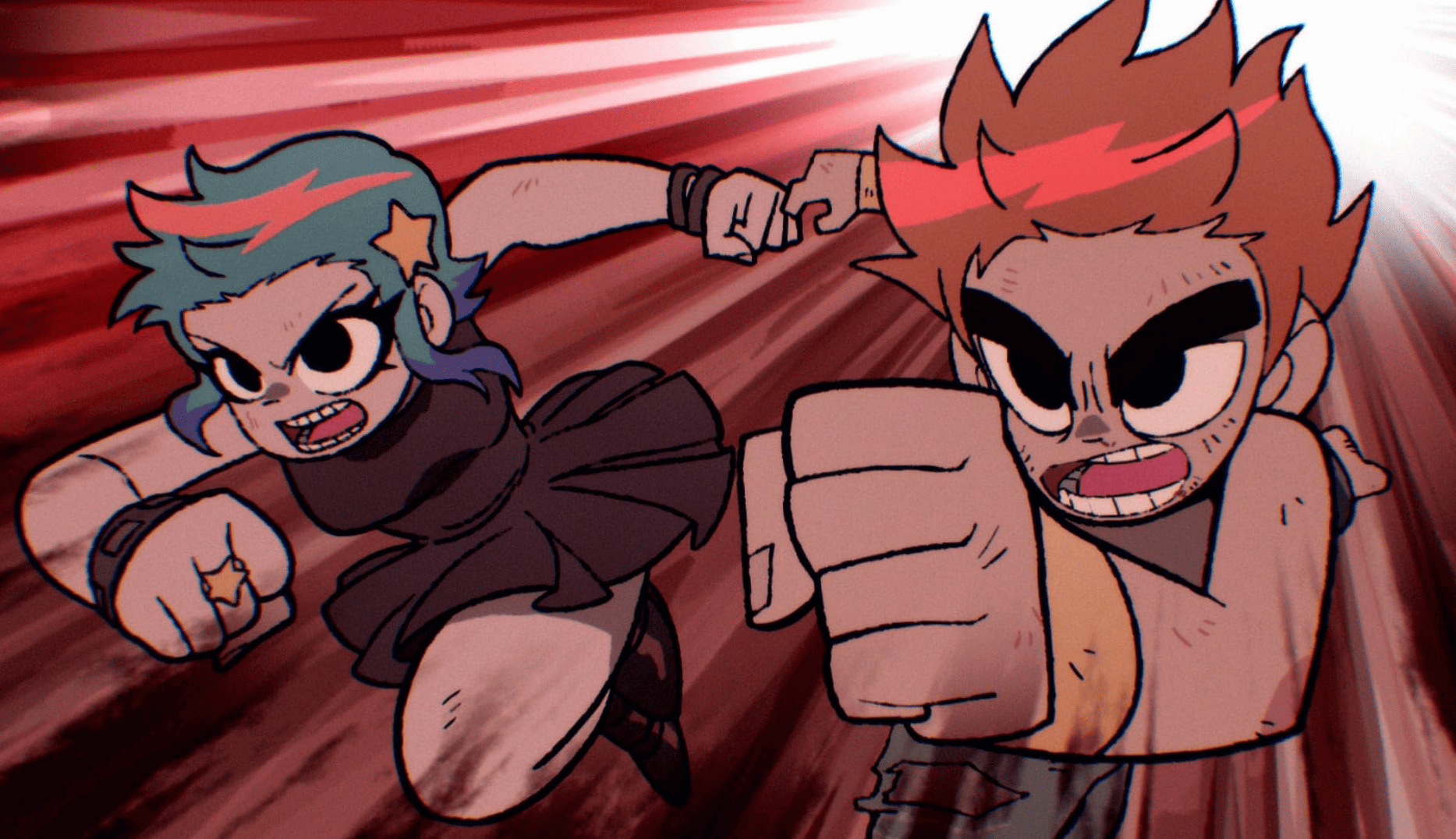
Scott Pilgrim is dead.
Okay, not really, but if your entire understanding of the Scott Pilgrim franchise derives from the 2010 movie, “Scott Pilgrim vs. the World,” he may as well be. Even if you did read the graphic novels (like I swore I would for 13 years) or played the beat ’em up game, this show is not what you think it is, and it’s better for it.
Coming into this TV series, which is exclusively on Netflix, I knew nothing about it except the release date. In my hubris, I assumed that it would simply be a retelling of the film, a modern animated version that would create a new generation of cult-like following for Bryan Lee O’Malley’s magnum opus. And my suspicions were confirmed as I watched the first episode.
Yet, at the moment when Scott (Michael Cera) is supposed to take out the first evil ex (of which there are seven in case you forgot), he disappears. The only proof he ever existed is a couple of coins that lay where his body should be. At first, I thought I misremembered or that the show was intentionally gaslighting me, but as I devoured the second and then third and then all eight episodes, I realized “Scott Pilgrim Takes Off” had a lot more to offer than your average adapted animated series.
Ramona Flowers vs. the World

If the graphics novels and the Edgar Wright-directed film focus solely on the titular hero, the animated series chooses another protagonist instead: Ramona Flowers. The roller-blading alt girl of our collective teenage dreams, once again portrayed by Mary Elizabeth Winstead, was sadly a two-dimensional character whose only real purpose was to drive the plot. She was an object, and while it was extremely obvious she was the coolest person in any room she walked into, she never truly got her moment. In “Scott Pilgrim Takes Off,” we finally see Ramona underneath the facade, a woman who’s righting the wrongs she made as a girl to find a boy she barely knows.
“Scott Pilgrim Takes Off” is, in a lot of ways, about healing and what happens when people can’t move on. In this alternate retelling, Ramona’s exes are also a lot more fleshed out as characters. Yes, they’re essentially incels gathering around to simp over a woman that long ago forget about them, but you also feel for them. Ramona hurt them in the kind of way that makes you look inward and realize that nobody, not even you, likes you — that you don’t deserve love. Although she doesn’t hurt people intentionally to get a kick out of it, she ghosts people because of the fear that comes with that kind of confrontation. When she gets too attached, she moves on, leaving the other person to obsess about what they did wrong.
In the show, Ramona can’t run away. In order to find out what happened to Scott, she’s forced to confront every ex, forcing her to provide a belated closure that slowly begins to heal the trauma for both the ghoster and the ghostee. When she confronts Roxie (Mae Whitman) early on, the only woman member of the League of Evil Exes, Ramona apologizes to her for leaving the way she did, for not being able to face her. Roxie, now teary-eyed, confesses that she felt like nothing, but in that moment of catharsis, she finally lets go. She forgives Ramona, and they become friends. In real life, breakups and forgiveness are a lot messier, but it’s powerful nonetheless with a lot of emotional stakes. Like Ramona, the exes are allowed to grow and move past it, ending the cycle in a healthy way rather than a violent one.
Ramona confronting her exes in this alternate universe makes her a better, more emotionally mature person, which we get a glimpse of in later episodes. We see that when she’s older, she’s the one in the relationship willing to confront the harsh truth, and I love that for her.
Scott Pilgrim Is Back Better Than Ever

After the high bar that Edgar Wright set with the film more than a decade ago, it was hard to imagine that it could be matched, or even topped. While “Scott Pilgrim vs. the World” holds a special place in my heart — it’s arguably Wright’s best work besides “Hot Fuzz” — “Scott Pilgrim Takes Off” is an impressive project. The animation, which is done by Japanese studio, Science Saru, is based on the art from the graphic novels, and it’s incredible.
From the opening theme — with music performed by Anamanaguchi — to the many fight sequences, the animation is slick, stylized, and just straight-up fun. With fourth wall breaks, unexplained sci-fi stuff, and arcade video game references, each episode is a treat. Unlike trope-y anime series, “Scott Pilgrim Takes Off” feels fresh. You simply can’t predict how episodes will end, keeping you hooked until you realize it’s way past your bedtime.
Aside from the animation, I have to give a shoutout to the voice acting. Everybody from the film came back to reprise their roles in the animated series. Typically, on-screen actors aren’t great when it comes to voice acting, but there were strong voice performances throughout. Although everyone brought it, Kieran Culkin’s Wallace, Aubrey Plaza’s Julie, and Johnny Simmons‘ Young Neil were some of my favorites. There are even a few surprise cameos here that keen listeners will enjoy.
Scott Pilgrim Taking Off Improved the Story

As Knives Chau (Ellen Wong) tells Scott once he’s back: “I’m glad you’re alive, but I’m also glad you died. It gave me a lot of space to reflect and grow.” I have nothing against Scott Pilgrim or the original story. That said, this alternate version of events is better in a lot of ways. By shifting focus from Scott to other characters, we get to see more of the characters and this world. Ramona, Knives, Scott’s friends, and the exes were a lot more layered than I ever imagined.
I wish I had more time with these characters, especially since there’s unlikely to be a second season, but either way, “Scott Pilgrim Takes Off” totally recontextualizes the original story and makes it better. Like Ramona providing closures for her exes, this TV series does the same for the film and the graphic novel.
